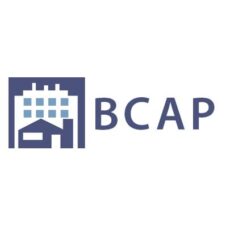Post Report: U.S. Department of Energy National Energy Codes Conference

Executive Summary
In the world of building codes, concerns about energy usage are often seen as a separate issue from those concerning health, safety, and welfare. However, building energy codes ensure that future residential and commercial buildings will be more efficient and contribute minimally to greenhouse gas emissions. They also provide lower utility bills for consumers and reduce demand on the power grid. According to the U.S. Energy Information Administration, buildings in this country currently account for approximately 40% of all energy consumed. To support the development, adoption, implementation, and enforcement of building energy codes, the U.S. Department of Energy’s Building Energy Code Program (BECP) has reinstated this annual conference after a four year hiatus. They contracted with the Building Codes Assistance Project (BCAP) to aid in planning and organizing the event.
Held in Nashville, Tennessee from March 23 through March 26, 2015, “Energy Codes in Action!” attracted over 250 representatives of the design, construction and enforcement industries, and was widely considered to be a successful re-launch of this highly valued BECP program. At the request of the Kleinman Center for Energy Policy at the University of Pennsylvania, BCAP is pleased to provide this report on major trends and themes of the conference. All available presentations from the conference can be viewed on the conference website:
The following highlights trends and issues that were discussed at this year’s conference.
Trends
National model energy codes have been around since 1983 and are updated and published every three years by ASHRAE and by the International Codes Council (ICC).The current model energy codes are ASHRAE Standard 90.1-2013 and the 2015 International Energy Conservation Code (IECC), which are designed to greatly improve the efficiency of our homes, offices, and virtually every other sector of the built environment. Compared to the model energy codes from 2006, today’s codes require buildings to be 30% – 40% more efficient. We are also rapidly changing the way codes are applied: where once code officials relied on a checklist of prescriptive requirements, e.g. the quantity of insulation, many industry stakeholders now realize the benefits of showing compliance with the energy code by using energy modeling software, which can visualize how the building as a whole will use energy. Although most experts agree that using the predicted performance of a building is the way of the future – not to mention essential for going beyond minimum code for achievements like Leadership in Energy and Environmental Design (LEED) certification or Zero Net Energy (ZNE) – there are still barriers and challenges to widespread implementation of this method. On the residential code side, a new compliance path has been added which utilizes energy modeling and an Energy Rating Index (ERI) score which requires a Home Energy Rating System (HERS) rating based on climate zone. There are limited ways to guarantee that a real building will perform like its energy model. Codes based on real energy use outcomes are one likely piece of the solution. Outcome-based codes also encourage design professionals to review their building simulations, comparing projected energy use to actual energy use and identifying the reasons behind any discrepancies. In 2014, for the first time, a national model code (The ICC’s International Green Construction Code) included an outcome-based code as a compliance option.
Issues
State and local-level support is key to achieving significant rates of energy code compliance. BCAP’s involvement includes a program for code officials to become energy code ambassadors who educate their peers on components of the code; we also encourage state energy code compliance collaboratives, where stakeholders can share best practices and work through common issues. State support also comes from the Department of Energy (DOE), which recently invested $6 million to research methods of producing a measurable change in residential building energy savings through energy codes. Eight U.S. states have been selected to participate and are currently conducting field studies. Developing code compliance studies on the commercial code side is more complicated due to the wild variety of building typology and complex systems, but stakeholders are starting this process as well. A primary intended benefit of these studies is showing the cost-benefit rationale of building energy codes, incentivizing utilities to invest in improving compliance.
The age demographics of the code enforcement community point to an impending diminution of professionals in that field. One of the challenges in the near future will be understanding how to drive younger generations to become code officials. Increased implementation of technology, including energy modeling, may work as an incentive.
There is a diversity of opportunities to improve energy efficiency in buildings using codes. Although the easiest time to construct a better building is during the initial design, improving the performance of the numerous existing buildings is also a huge opportunity for savings. Certain periods in a building’s life cycle enable cost-effective, design-based retrofitting. Another means to improve code compliance is collaboration with utility companies who sometimes allocate funds for energy code improvement programs such as training to architects, builders, and code officials in their service area. And although the national model energy code set a minimum standard for buildings, many more progressive cities and jurisdictions have promoted “green codes” that have targets of even lower energy usage.
Prepared by the Building Codes Assistance Project
The Building Codes Assistance Project is a non-profit organization that advocates for the adoption, implementation, and advancement of building energy codes.

